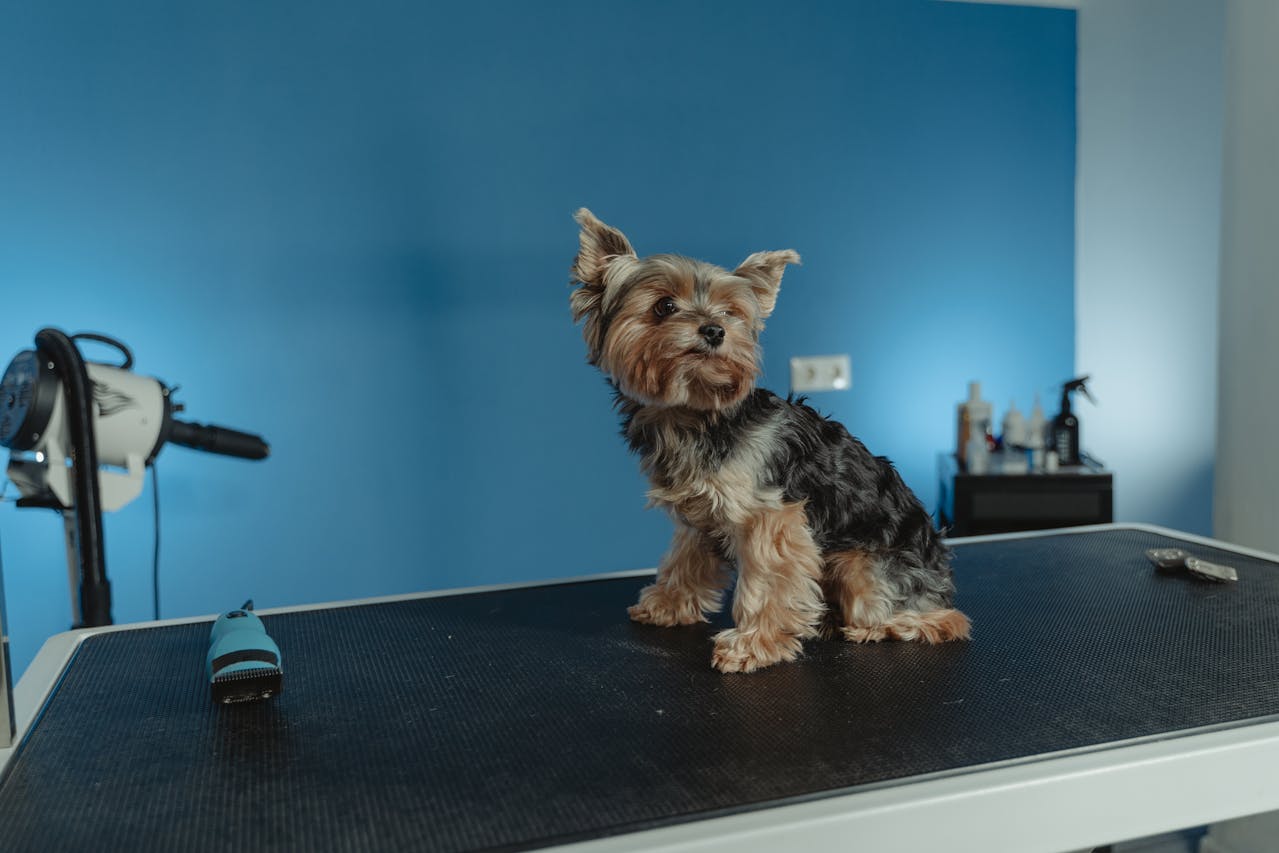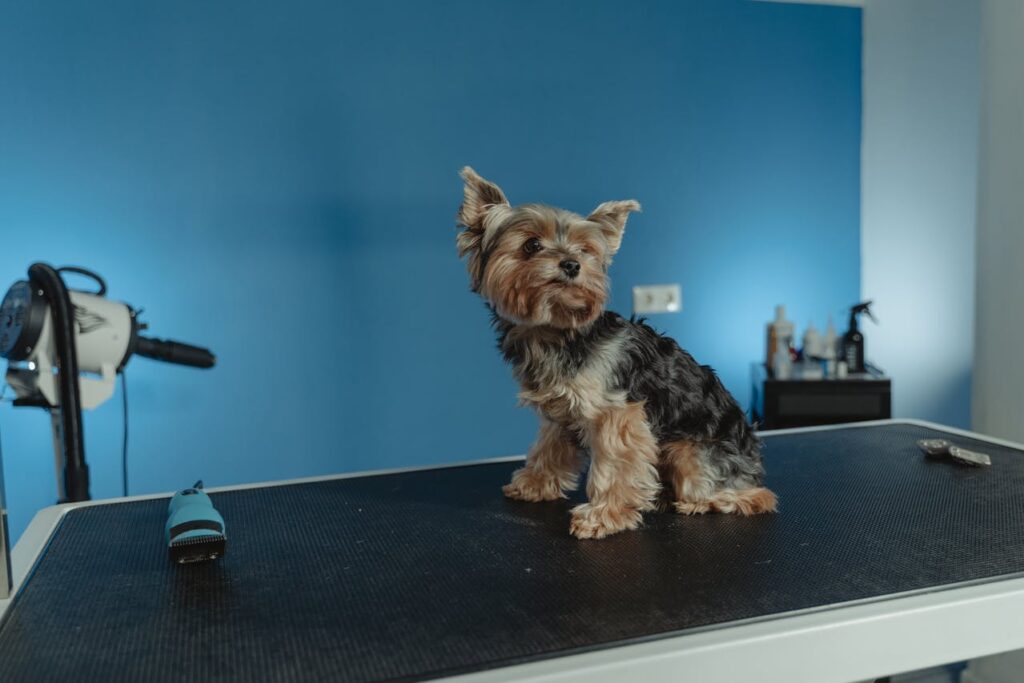Pamper Your Pup: The Ultimate Guide to Dog Grooming for a Happy and Healthy Pet

When it comes to our beloved furry friends, dog grooming is much more than just keeping them clean—it’s about ensuring their overall health, comfort, and happiness. A well-groomed dog is not only a joy to cuddle but also a sign of a responsible pet parent. In this ultimate guide, we’ll explore everything you need to know about dog grooming service, from basic hygiene to advanced care tips.
Why Dog Grooming Is Important
Grooming plays a crucial role in maintaining your dog’s physical and mental well-being. Here’s why:
- Health Benefits: Regular grooming helps identify skin issues, infections, or abnormalities early.
- Hygiene: Clean fur and skin reduce the risk of fleas, ticks, and other parasites.
- Bonding: Grooming sessions strengthen the bond between you and your dog.
- Comfort: A well-groomed dog is free from mats, overgrown nails, and other discomforts.
- Appearance: Let’s face it—a well-groomed pup looks adorable!
Key Components of Dog Grooming
1. Brushing
Regular brushing removes dirt, prevents matting, and distributes natural oils across your dog’s coat.
How Often Should You Brush?
- Short-haired breeds: Once a week.
- Medium-haired breeds: Every 2–3 days.
- Long-haired breeds: Daily brushing is essential.
Tips for Effective Brushing:
- Use the right brush for your dog’s coat type (slicker, pin, or bristle brushes).
- Be gentle around sensitive areas like the belly and legs.
- Reward your pup with treats for good behavior during grooming.
2. Bathing
Bathing is essential for maintaining a clean and healthy coat, but overbathing can strip natural oils.
How Often Should You Bathe Your Dog?
- Indoor dogs: Once every 4–6 weeks.
- Outdoor dogs: Every 3–4 weeks.
- Dogs with skin conditions: Follow your vet’s advice.
Bathing Tips:
- Use lukewarm water and dog-specific shampoos.
- Protect their ears by placing cotton balls inside (don’t push too far in).
- Rinse thoroughly to avoid residue that can irritate their skin.
3. Nail Trimming
Overgrown nails can cause discomfort and affect your dog’s gait.
How to Trim Nails Safely:
- Use a dog-specific nail clipper or grinder.
- Trim small sections at a time to avoid cutting the quick (the blood vessel inside the nail).
- If unsure, consult a professional groomer.
4. Ear Cleaning
Dirty ears can lead to infections and discomfort.
Steps for Cleaning Your Dog’s Ears:
- Use a vet-approved ear cleaner.
- Gently wipe the outer ear with a cotton ball or pad.
- Never use Q-tips, as they can damage the ear canal.
5. Dental Care
Oral health is vital for your dog’s overall well-being.
Tips for Maintaining Oral Hygiene:
- Brush your dog’s teeth 2–3 times a week with dog-specific toothpaste.
- Provide dental chews or toys to reduce plaque buildup.
- Schedule annual dental check-ups with your vet.
6. Coat Trimming and Styling
Certain breeds require regular coat trims to prevent mats and maintain a neat appearance.
Should You DIY or Hire a Professional?
- DIY: Suitable for basic trims and maintenance.
- Professional Groomers: Ideal for breeds with complex grooming needs (e.g., Poodles, Shih Tzus).
Tailoring Grooming to Your Dog’s Breed
Each breed has unique grooming requirements based on coat type, size, and lifestyle.
Breeds with Minimal Grooming Needs:
- Labradors, Beagles: Weekly brushing and occasional baths.
Breeds with High Grooming Demands:
- Shih Tzus, Maltese: Daily brushing, frequent trims, and regular baths.
Breeds Prone to Shedding:
- German Shepherds, Huskies: Regular deshedding tools and vacuuming are a must!
Tools You Need for Grooming
Having the right tools makes grooming easier and more effective.
Basic Grooming Kit:
- Brushes (slicker, pin, bristle)
- Nail clippers or grinders
- Dog shampoo and conditioner
- Ear cleaning solution
- Toothbrush and dog toothpaste
- Grooming scissors or clippers
Grooming at Home vs. Professional Grooming
Benefits of Dog Grooming at Home:
- Cost-effective.
- Allows for bonding time with your pet.
- Convenient for regular maintenance.
When to Seek Professional Help:
- Your dog’s coat requires specialized care.
- You’re uncomfortable with tasks like nail trimming or ear cleaning.
- Your dog has skin conditions or other health issues.
Grooming Tips for Anxious Dogs
Some dogs may resist grooming due to anxiety or fear. Here’s how to make it easier:
- Start Early: Introduce grooming as a puppy to build familiarity.
- Use Positive Reinforcement: Reward good behavior with treats and praise.
- Take Breaks: Don’t rush the process; groom in short, calm sessions.
- Desensitize: Gradually expose your dog to grooming tools and sounds.
Seasonal Grooming Considerations
- Summer: Frequent baths to remove sweat and dirt. Use cooling sprays.
- Winter: Avoid overbathing to prevent dry skin; keep fur trimmed to a manageable length.
Signs Your Dog Needs Grooming
- Matted fur or excessive shedding.
- Bad odor even after bathing.
- Scratching or licking paws frequently.
- Red, irritated skin.
Choosing the Right & Professional Grooming Service
If you’re opting for professional grooming, consider these factors:
- Certification and experience of groomers.
- Cleanliness and safety measures of the facility.
- Reviews and recommendations.
Conclusion
Grooming is more than just a chore—it’s an act of love that keeps your dog healthy, comfortable, and looking their best. Whether you choose to groom at home or enlist the help of professionals, the key is consistency and patience. Remember, a happy, well-groomed dog is a reflection of a loving and caring pet parent.
So, gather your tools, set aside some time, and pamper your pup like they truly deserve!
 S
S
Latest Articles

 S
S
Pamper Your Pup: The Ultimate Guide to Dog Grooming for a Happy and Healthy Pet

Phoenix Malayalam Movie Review: A Cinematic Masterpiece

જ્ઞાન સહાયક: આપના શૈક્ષણિક સફરને એકદમથી સરળબનાવો!

